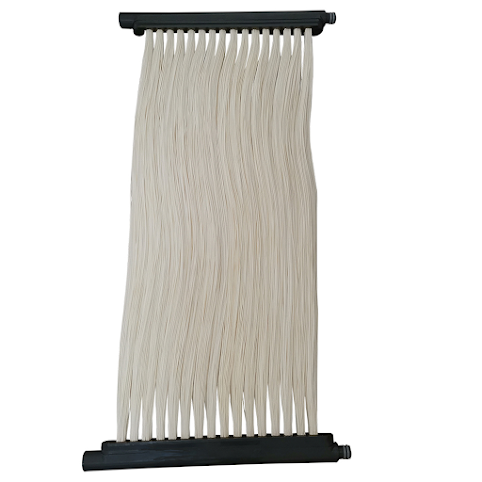Revolutionizing Wastewater Treatment: Role and Advantages of MBR Membrane Bioreactors
These days, a MBR film bioreactor may be a as often as possible utilized strategy in both civil and mechanical wastewater treatment plants. It combines a suspended development bioreactor with a microfiltration or ultrafiltration film unit. A bioreactor is a specially constructed chamber used in the wastewater treatment process that supports a biologically active environment, allowing bacteria and protozoa to thrive and absorb some of the materials present in the raw wastewater.
Depending on the presence or lack of oxygen and nitrates, they can be aerobic to remove organic matter and oxidize ammonia to nitrate, anoxic to remove nitrogen from nitrates to nitrogen gas, or anaerobic to remove organic matter. Membranes are usually erected following either anaerobic or aerobic bioreactors.
Three categories of bioreactors exist:
bioreactors with suspended growth, in which the biomass forms flocs; Bioreactors with attached growth, also known as biofilm bioreactors, are those in which the biomass grows affixed to carriers; hybrid bioreactors mix attached and suspended growth. For MBR membrane bioreactor operations, suspended growth bioreactors are often utilized. Hybrid bioreactors can also be employed, provided they are constructed correctly.
The layers work as a solidliquid separation instrument in the MBR, preparing and maintaining biomass inside of the bioreactor until it discharges treated particulate matter to an encompassing environment. They basically supplant the clarifiers that are utilized within the conventional enacted slime prepare.
Membranes for micro- and ultrafiltration can be employed in MBR membrane bioreactor applications. Since UF membranes have better separation properties and a lesser fouling propensity, they are usually the recommended option.
For MBRs, three different membrane geometries are utilized: tubular (or multi-tubular, MT); flat sheet (FS); and hollow fiber (HF).
Some designs, such spiral-wound (SW), are sensitive to the contents of suspended particulates and are hence unsuitable for MBR applications.
What is the operation of a MBR membrane bioreactor in the treatment of wastewater?
The separation of solids from a liquid is a vital role of membranes. This is often done in activated sludge plants with supplementary clarifiers.
There are two possible process configurations:
If vacuum-driven membranes are utilized, submerged MBR
External or sidestream MBR, if pressure-driven membranes are being utilized.
Submerged membranes are often utilized for medium- and large-scale installations, whereas pressure-driven membranes are typically employed for smaller installations and/or difficult-to-treat industrial wastewaters.
What benefits may MBR membrane bioreactor offer?
Greater hydraulic throughput or a smaller size
There's no need for large clarifiers now. A smaller, frequently rectangular chamber equipped with membrane cassettes takes the role of the secondary clarifier, the size of which is determined by solids loading and hydraulic pressure. Additionally, a 50% lower footprint is achieved since the same total mass of solids is held in a smaller tank due to the greater biomass concentrations that can be sustained within the bioreactors.
superior effluent that is devoid of germs and other diseases
The effluent has less bacteria and virus content and is free of suspended particles as compared to the activated sludge process. As a result, little disinfection is necessary.
As a result, the MBR method makes it simple to release the cleaned effluent into delicate bodies of water or to recover it for uses like utility, urban irrigation, or toilet flushing. It is also of excellent quality when fed straight into a reverse osmosis (RO) process. This is becoming more and more important given the tight effluent quality standards set by municipal rules that went into force recently and will likely continue to do so in the foreseeable future.
Greater capacity for automation
The MBR membrane bioreactor system may operate entirely automatically, reducing the need for operator involvement that is usually necessary for traditional treatment facilities. This indicates that decentralized sites may also simply apply the MBR procedure.
Uses for MBR membrane bioreactor
MBR technology is currently widely utilized for treating a variety of wastewater streams, including landfill leachate, industrial wastewater, and municipal wastewater.
Treatment of municipal wastewater
MBR systems were first created with an emphasis on water recycling and reuse for municipal wastewater treatment applications. The MBR's small size, capacity to create reusable water, and trouble-free operation make it the perfect method for recycling municipal wastewater in areas with limited space and water.
Treatment of industrial wastewater
High organic loadings and chemical compounds that are particularly challenging to manage or decompose can be found in industrial waste streams, which makes MBR and other alternative treatments more appealing.
In actuality, MBRs keep all of the biomass, which promotes the biodegradation of resistant materials by increasing the diversification of the bacterial and protozoa populations.
Treatment of landfill leachate
MBRs have been used in several other fields than the treatment of industrial and municipal wastewater. One example is the handling of leachates from landfills. High amounts of both organic and inorganic substances are typically seen in landfill leachates. MBR membrane bioreactor systems have been effectively used with various treatment procedures, such reverse osmosis and nanofiltration, to remove heavy metals and inorganic contaminants.




Comments
Post a Comment